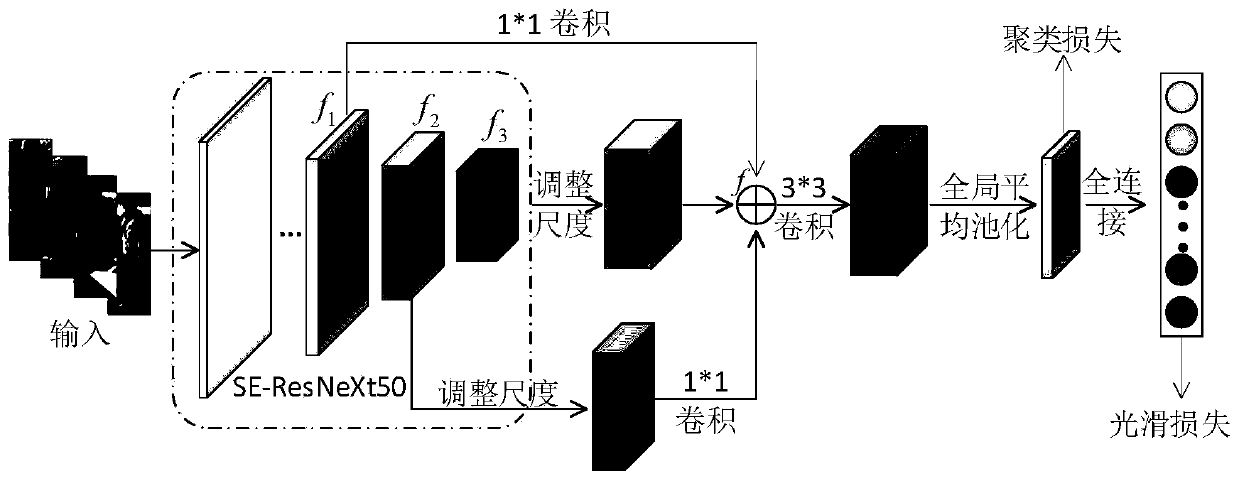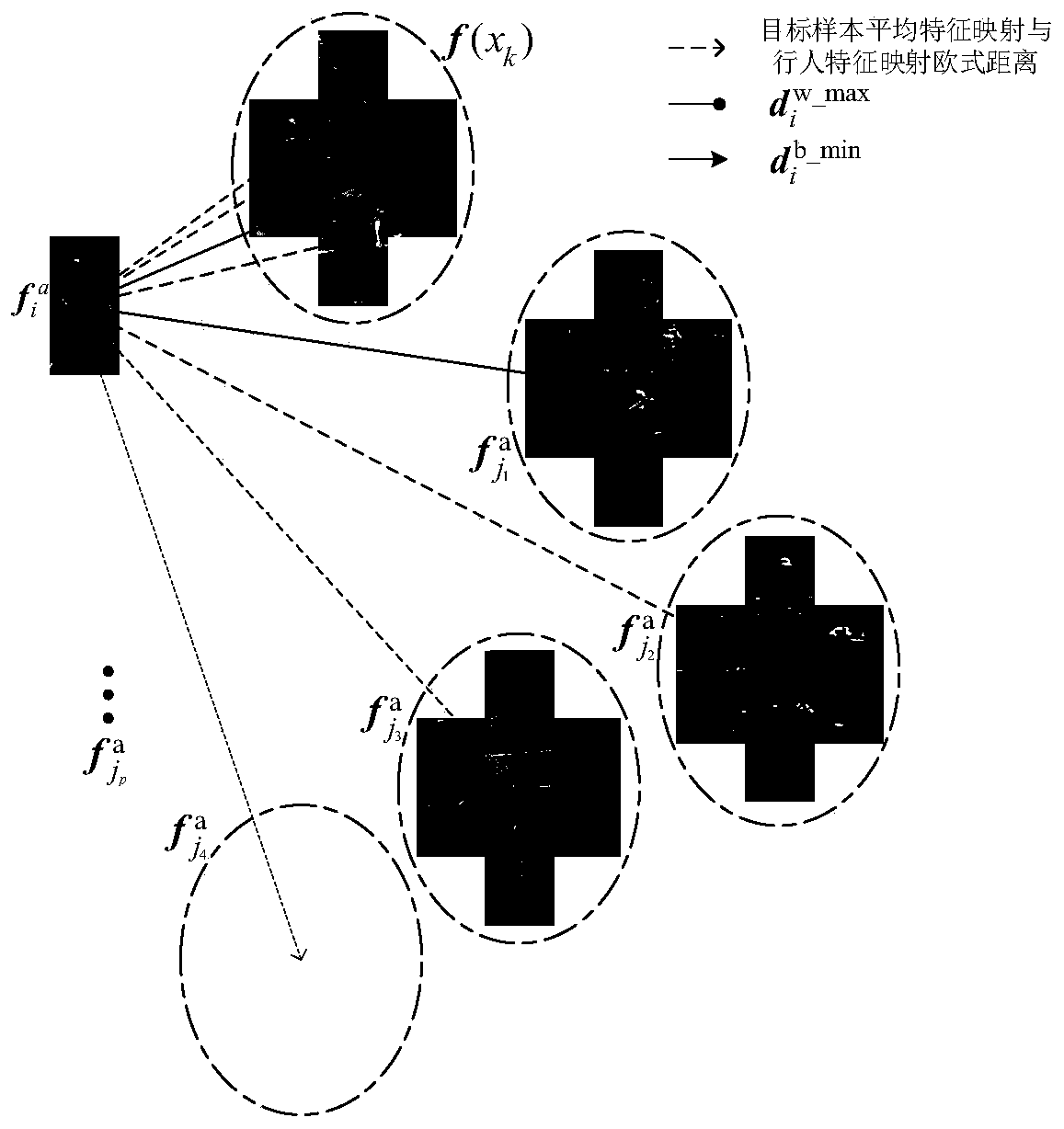Pedestrian re-recognition method based on global feature splicing
A pedestrian re-identification and global feature technology, applied in the field of pedestrian re-identification based on global feature representation, can solve the problems of unattainable, high recognition rate, complex network model, etc., achieves low computational complexity, simple network structure, and improved network performance. Effect
- Summary
- Abstract
- Description
- Claims
- Application Information
AI Technical Summary
Problems solved by technology
Method used
Image
Examples
Embodiment Construction
[0023] In order to facilitate those of ordinary skill in the art to understand and implement the present invention, the present invention will be described in further detail below in conjunction with the accompanying drawings and embodiments. It should be understood that the implementation examples described here are only used to illustrate and explain the present invention, and are not intended to limit this invention.
[0024] This embodiment proposes a feature splicing method of different spatial dimensions, using SE-ResNeXt50 as the basic backbone network, and performing feature splicing on the last three convolutional layers. In order to reduce the lack of information, convolution and global pooling are used to extract deeper features. The extracted features have better fine-grained feature representation capabilities. When measuring the distance, a clustering loss function is used instead of the traditional triplet loss function. During training, random erasing (Random...
PUM
 Login to View More
Login to View More Abstract
Description
Claims
Application Information
 Login to View More
Login to View More - R&D
- Intellectual Property
- Life Sciences
- Materials
- Tech Scout
- Unparalleled Data Quality
- Higher Quality Content
- 60% Fewer Hallucinations
Browse by: Latest US Patents, China's latest patents, Technical Efficacy Thesaurus, Application Domain, Technology Topic, Popular Technical Reports.
© 2025 PatSnap. All rights reserved.Legal|Privacy policy|Modern Slavery Act Transparency Statement|Sitemap|About US| Contact US: help@patsnap.com



